Sourdough: The Gateway Drug
- Ashley Daugherty

- Oct 8, 2024
- 4 min read
Updated: Oct 8, 2024
If you’ve ever found yourself scrolling through Instagram and admiring all the beautiful, rustic loaves of bread, you might have thought, “Hey, I could do that!” Well, friend, let me tell you, once you start baking sourdough, you’ll be dreaming of land, chickens, and the perfect kitchen garden (all of which are on my to-do list, by the way). Sourdough is the ultimate gateway drug into the homesteading lifestyle—and I should know because I’ve lived it!

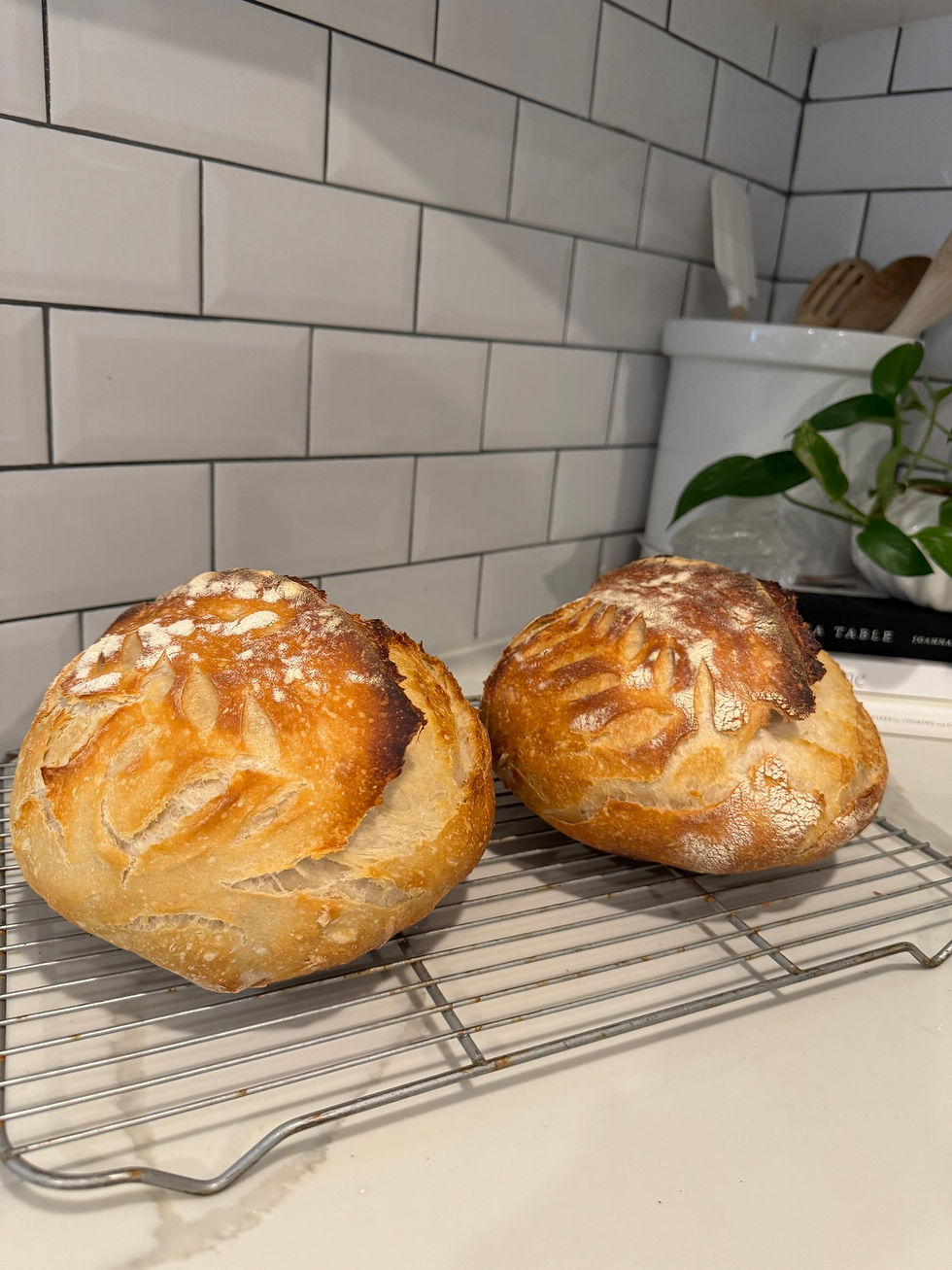
Before you go running off to buy your own land, though, let’s focus on the bread. Making sourdough is simple but also an art form. And I’ve learned a lot along the way—both from trial and error and from realizing that it’s okay to use shortcuts like dehydrated starters (more on that in a minute).
Here are my three biggest takeaways for anyone just stepping into the world of sourdough:
1. Invest in a Kitchen Scale.
I know, I know—spoons and cups have served us well for years. But let me tell you, weighing your ingredients in grams is going to change your life. Baking is a science, and if you want consistent, delicious results, you need precision. Using a scale saves time and effort because you can stop fussing over whether your cup of flour is too packed or too light. Measure your ingredients in grams, and you’ll have a stress-free sourdough experience. (And, honestly, anything that saves time when you’re juggling kids, housework, and everything else is worth its weight in gold!)
2. Forget Kneading—Embrace the Stretch and Fold.
One of the best things about sourdough is that it doesn’t need traditional kneading. Instead, we’ve got the magical ‘stretch and fold’ method, which gently develops gluten over time. There’s also the coil fold, another great option if you want to mix it up. Both methods are way easier on your arms and your schedule. It’s like letting the bread do most of the work for you—kinda like outsourcing, but for dough!
3. The Starter is Everything.
A strong, active starter is the heart and soul of your sourdough. I’ve tried all kinds of starters and finally found success with a dehydrated one. I used to think using a dehydrated starter was cheating, but here’s the thing: by the time you’ve fed it three times, it’s become yours. You’re the one nurturing it, feeding it, and deciding how it grows—kind of like raising kids, except with fewer tantrums and more bubbles. Just make sure it’s bubbly, strong, and ready to go before you bake.
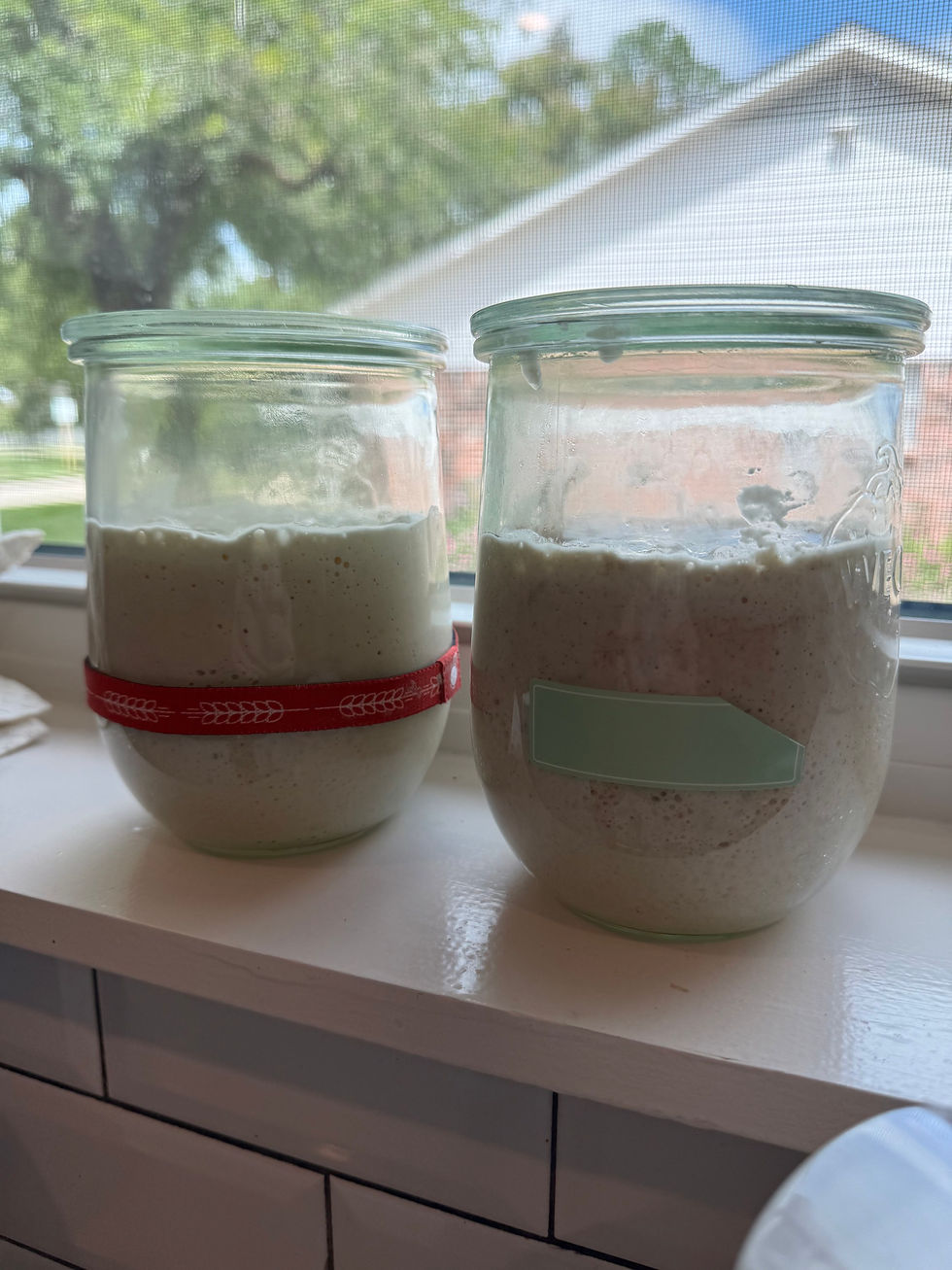
Now that you’ve got my three main tips, let’s talk a little more science—because sourdough isn’t just delicious, it’s good for you.
Fermentation: The Gut’s Best Friend
Sourdough’s long fermentation process is what sets it apart from other breads. This process breaks down the gluten and phytic acid in the flour, making the bread easier to digest and better for your gut. The fermentation also creates lactic acid, which acts as a natural preservative. So not only does your bread last longer, but it’s also packed with probiotics that support a healthy microbiome (your gut will thank you).
Bulk Fermentation: The Magic Hour(s)
During bulk fermentation, your dough gets all cozy and bubbly. This is when the wild yeast in your starter and the bacteria are hard at work developing the flavor and texture. The longer you let it ferment, the more complex the flavor becomes. Patience is key here, but the reward is a loaf that’s not only delicious but also good for your digestion.
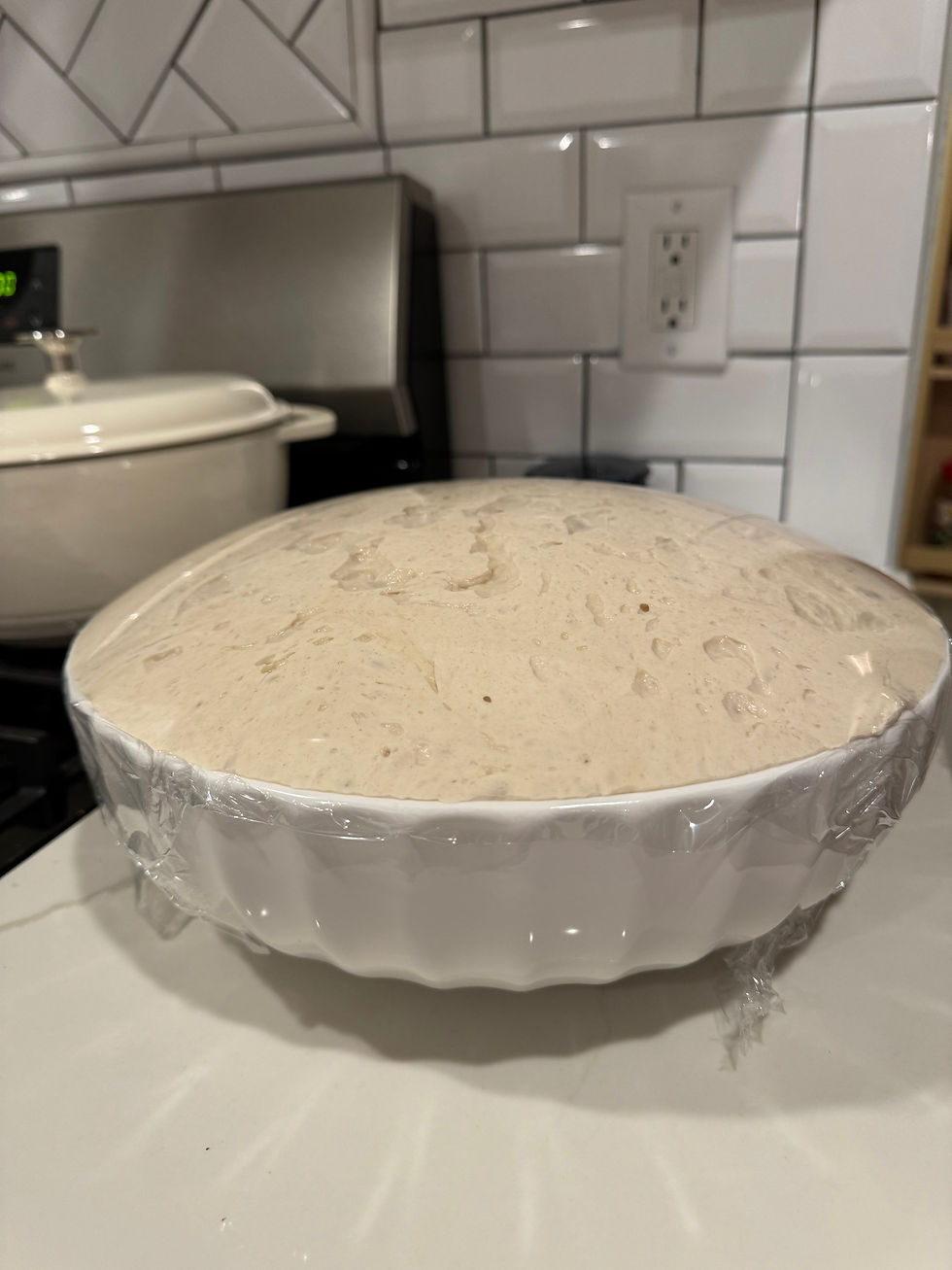
Simple Ingredients, Big Impact
One of the most amazing things about sourdough is how it transforms just three ingredients—flour, water, and salt—into something so complex and flavorful. When it comes to salt, you don’t add it right away. This is where the term ‘autolyse’ comes into play. After mixing your flour, water, and starter, you give it about an hour to develop gluten naturally before adding the salt. This little trick makes a big difference in the texture of your bread. Think of it as giving your dough a head start before the salt steps in to do its job.
Now that you’ve got the basics, you’re ready to get in the kitchen! Below is my recipe for a beginner sourdough. Keep in mind that everybody’s recipe is different and there are many factors to take into consideration such as house temperatures, humidity, and even brands of flour you use. That being said, this is the recipe that has been working for me and what I believe is the best tasting bread, but feel free to start with it and make it your own.
But first, let’s talk materials! You can get these off Amazon or my favorite website Made With Loave. Use code ash__doc for 10% off their sourdough baking kit!
Materials Needed:
• Glass jar for your starter: A clear glass jar works best so you can easily see the activity of your starter.
• Mixing tool: A Danish whisk (or a wooden spoon) is ideal for mixing your dough and starter without overworking it.
• Kitchen scale: For measuring ingredients by grams (this is a must for accuracy in sourdough baking).
• Large mixing bowls: You’ll need a couple of large bowls for mixing and proofing your dough.
• Banneton basket (proofing basket): Helps your dough hold its shape during the final proofing stage.
• Bench scraper: For dividing and handling the dough without sticking.
• Lame (bread scoring tool): Used for scoring the top of the dough to allow for proper expansion during baking.
• Dutch oven or cast iron combo cooker: This traps steam, which is crucial for getting a great crust on your sourdough.
• Tea towel or cloth: To cover your dough during proofing.
• Silicone spatula: Helpful for scraping down the sides of your mixing bowls and handling sticky dough.
These essentials will set you up for successful sourdough baking!
Now that you’ve got the basics down, you’re ready to bake! Just remember, once you start making sourdough, it’s hard to stop. It’s the gateway to wanting more from your kitchen—whether that’s fresh herbs from your garden, a few chickens in the yard, or maybe even a full homestead. Trust me, I’ve been there!
Unlock my exclusive sourdough recipe, including ingredients, measurements and instructions by becoming a TMT Insider!
Stay tuned for my favorite sourdough recipes, including my Pumpkin Sourdough, perfect for fall.
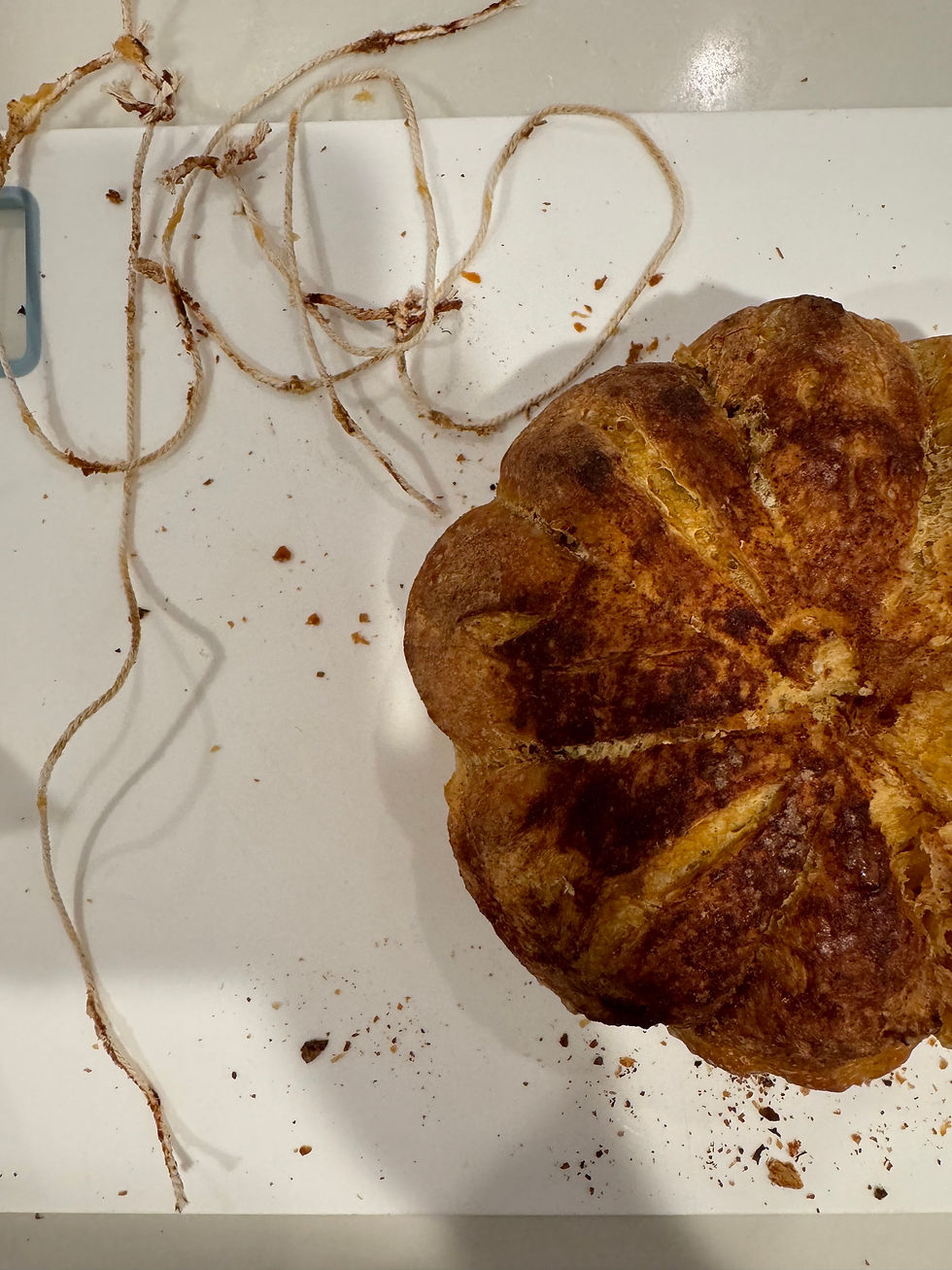
Happy baking!
Xo,
Ashley

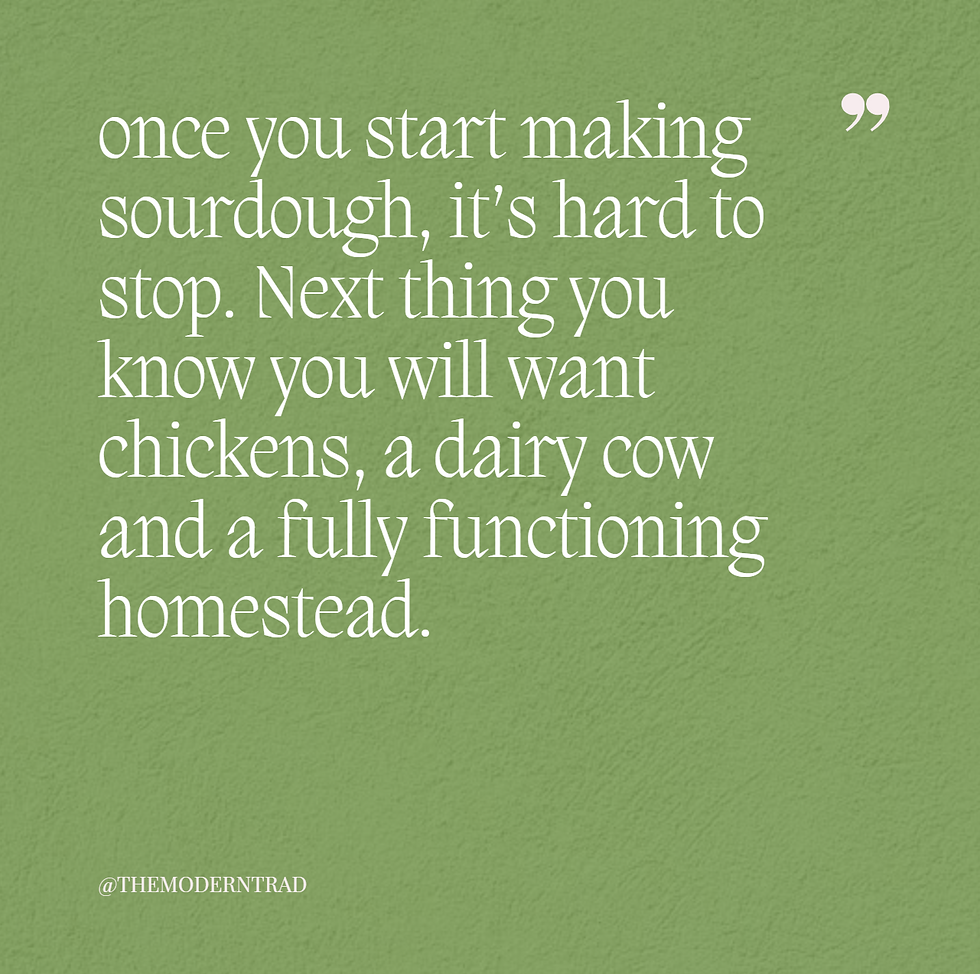



Comments